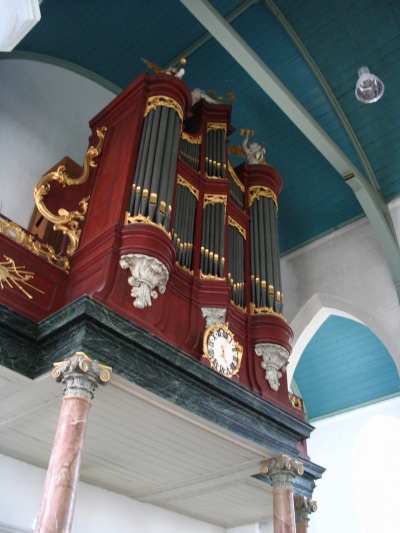In 1765 G. Steevens built the organ with one manual and a permanent coupled pedal board. H.B. Lohman enlarged the organ between 1839 an 1844 with a second manual (Bovenwerk). Unfortunately he wasn't able to finish and organ builder Van Dam completed the works. September 14th 1845 the organ was re-inaugurated. In 1885 some repairs were made. Organ builder De Koff added an independed pedal in 1935 and changed some stops on the manuals. He also changed the console position from the back of the organ to the side needed for the added pedal.
In 1973 Flentrop restored the organ. The pedal of De Koff was removed and the console placed again in the rear of the organ. A new mechanical action was made. A separate case (almost completely closed!) behind the console was made for a new pedal of 5 stops. All stops are of metal. Unfortunately the position of the manual wind chests is very close, making it impossible to reach the Hoofdwerk pipe work for regular tuning.
In 2005 Van den Heuvel was awarded with the contract. Work started in January 2006.
The basses of the manual reeds and the pedal reeds were problematic in speech caused by the lead covering which was deformed due to creep. The lead covering is replaced by brass only in the erea where the wedge holds the tongue re-ensuring a stable construction in time. Lead and leather covering in the erea where the tongue beats were kept.
Collapsed pipe feet of the metal Subbas 16' and Prestant 8' were repaired, tuning damage was repaired and the voicing corrected.

Tuning damage.
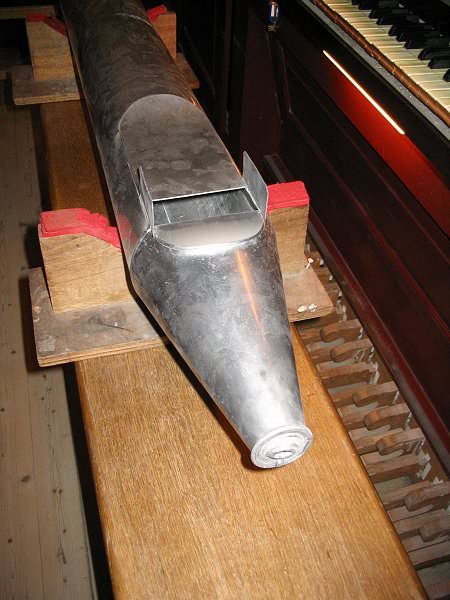
Collapsed foot of a Subbas 16' pipe.
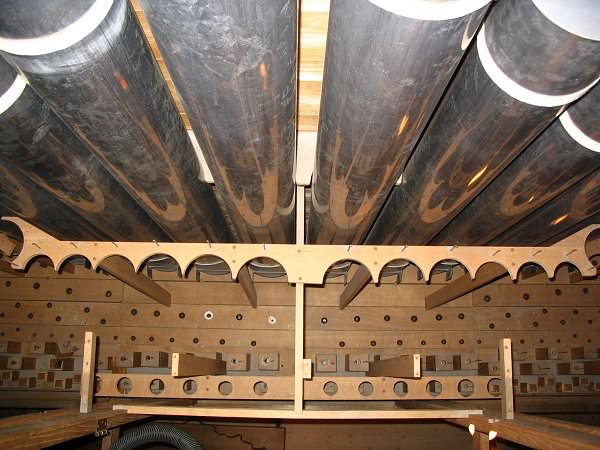
View on the windchest. Only the largest Subbas pipes are still in place.
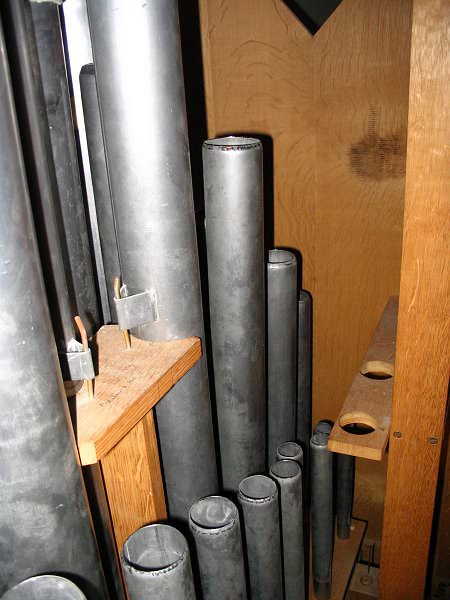
Tuning damage repaired and pipes cone-tuned.
Because the Pedal pipework is located in an almost completely closed case additional sound hole were created in the side walls.
Bovenwerk
For the Bovenwerk one windchest is used with the basses placed in the middle. All pipework is placed on the chest (including the Viola di Gamba from low C) except eleven wooden pipes of the Roerfluit 8' which are place in front of the chest.
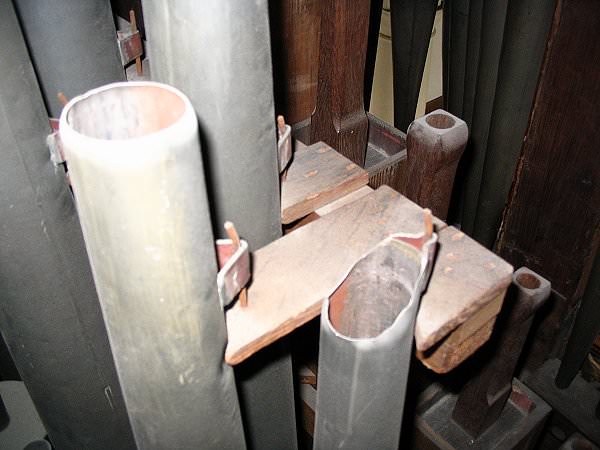
Impossible to tune this Baarpijp 8' pipe.
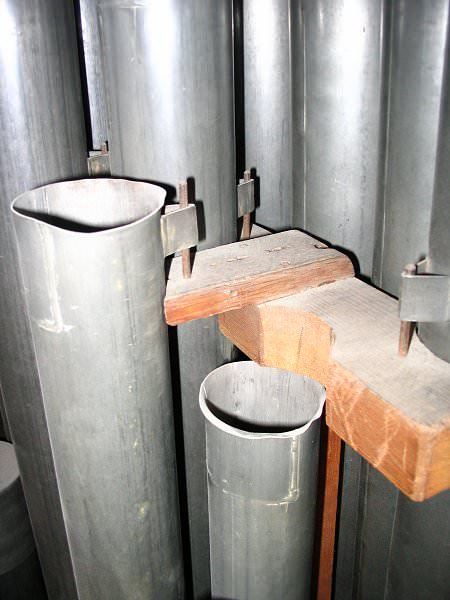
Also rather difficult to tune these Octaaf 4' pipes.
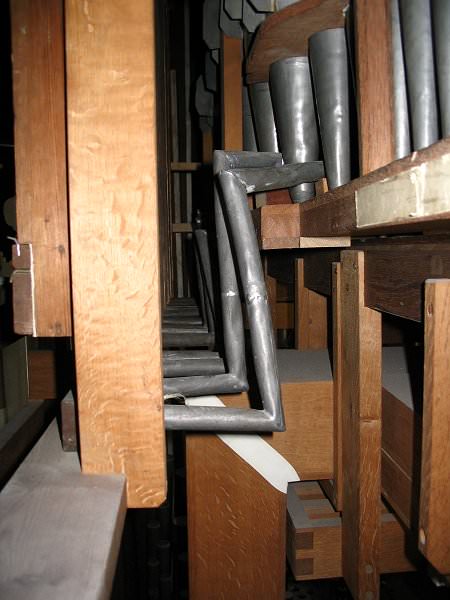
The toe-board for the wooden Roerfluit 8' basses. The lead windducks are of minimal diameter and have 3 right-angle corners causing a low windsupply resulting in a very low volume of these pipes.

This low volume caused a lowering in pitch which had to be corrected by tuning. Pipes were creatively shortened to handle the stoppers...
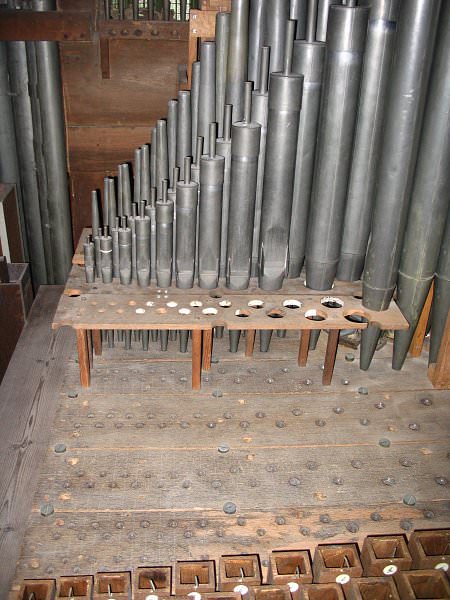
The Baarpijp and Roerfluit pipes back on the chest.

View downstairs on the C-side of the Hoofdwerk. There is a minimal height difference between the Hoofdwerk and Bovenwerk.
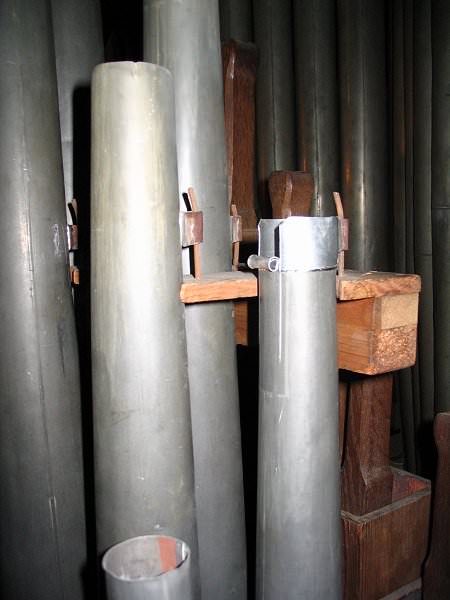
The now tuneable Baarpijp 8' pipe. After example of the largest pipes a tuning-collar is provided.

The three 8 foot stops of the Bovenwerk: Baarpijp, Roerfluit and Viola di Gamba. The Viola di Gamba has only tuning-collars (no expressions) in the largest 12 pipes, all the remaining pipes are at natural length.

All flue pipes back on the windchest. The first stop is the Flageolet 1'. The Dulciaan 8' is not yet placed back.
Hoofdwerk
The Hoofdwerk has a C and C# windchest with the basses (LC-TF) on the side in towers. The trebles are mainly placed below the windchest of the Bovenwerk. Space between the Hoofdwerk chests is only accessible from the front by removing the pipes of the center tower.

Hoofdwerk pipes seen from the Bovenwerk level. Here the C# side. Pipework is made with relative thin walls and high lead content. Due to changes in the past (expressions and tuning collars were provided but now soldered back) and the hard to reach pipework in general a lot of tuning damage was present.

To reach the flue stops from the back the trebles of the Trompet were removed. The empty rack is of the removed Mixtuur. Just behind the display pipes the Bourdon 16' and Prestant 8' in an angled position.

Access to the Hoofdwerk by this scaffolding. Display pipes of the side towers were removed to access the wooden basses of the Bourdon 16' and 8'.
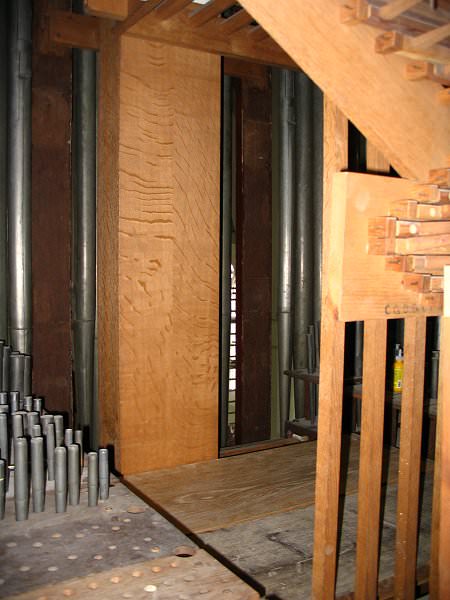
From the scaffolding access to this small space between the chests is possible.

Repaired and re-racked pipes of the Prestant 8' and Bourdon 16'.
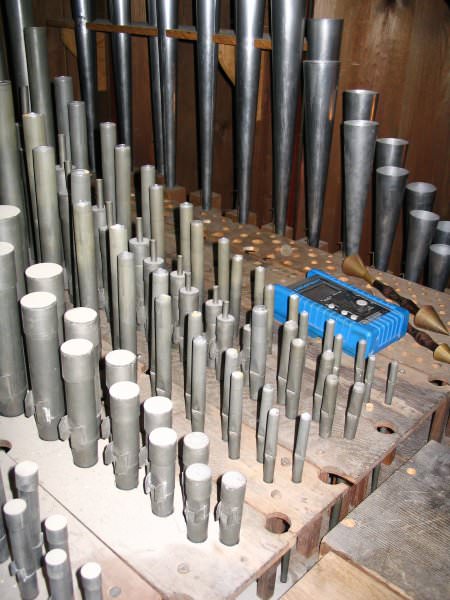
Because the organ should be playable as much as possible during the works it was not possible to clean and repair all stops at once. The Octaaf 4', Roerfluit and Quint 3' are cleaned and repaired. The stopped pipes left on the photo are not yet done.

Display pipes are placed back after repaires.

Almost all pipes are back on the chests.

Only the mixtuur is missing.
The work was finished in 2006.

